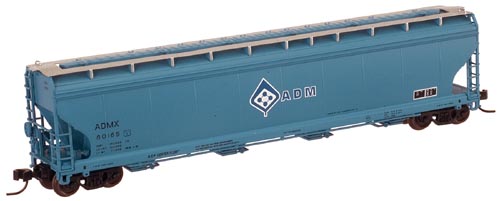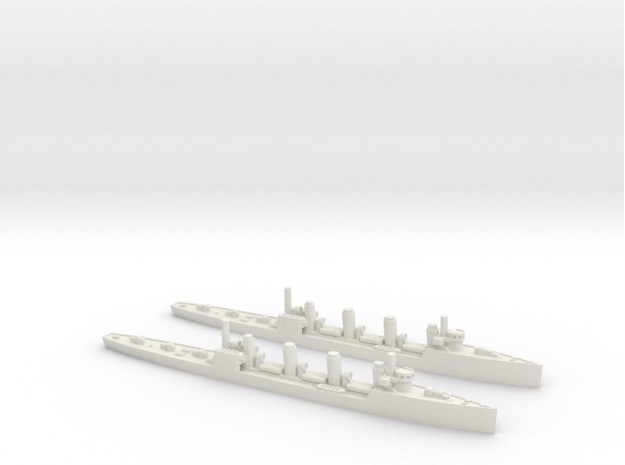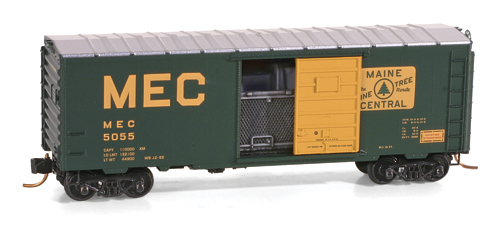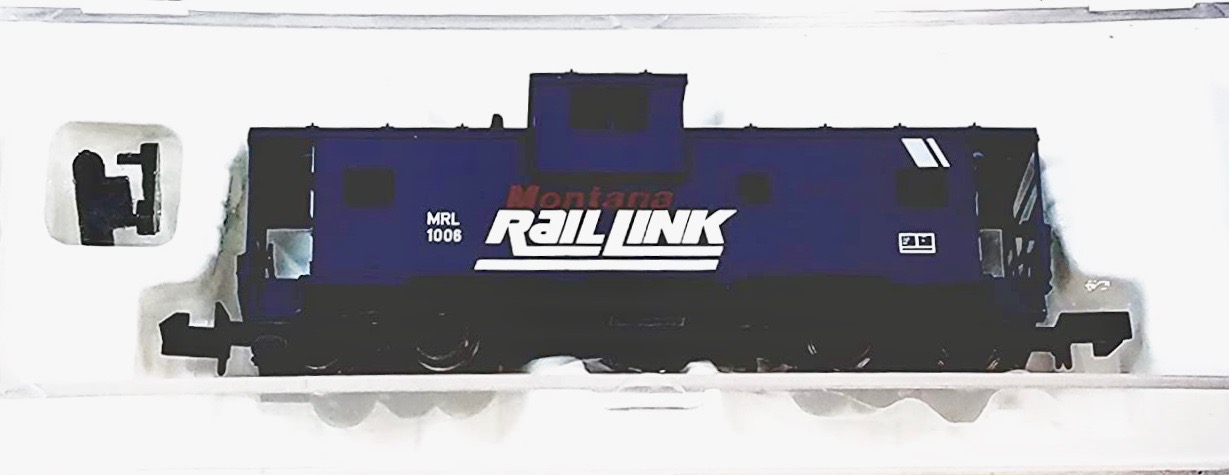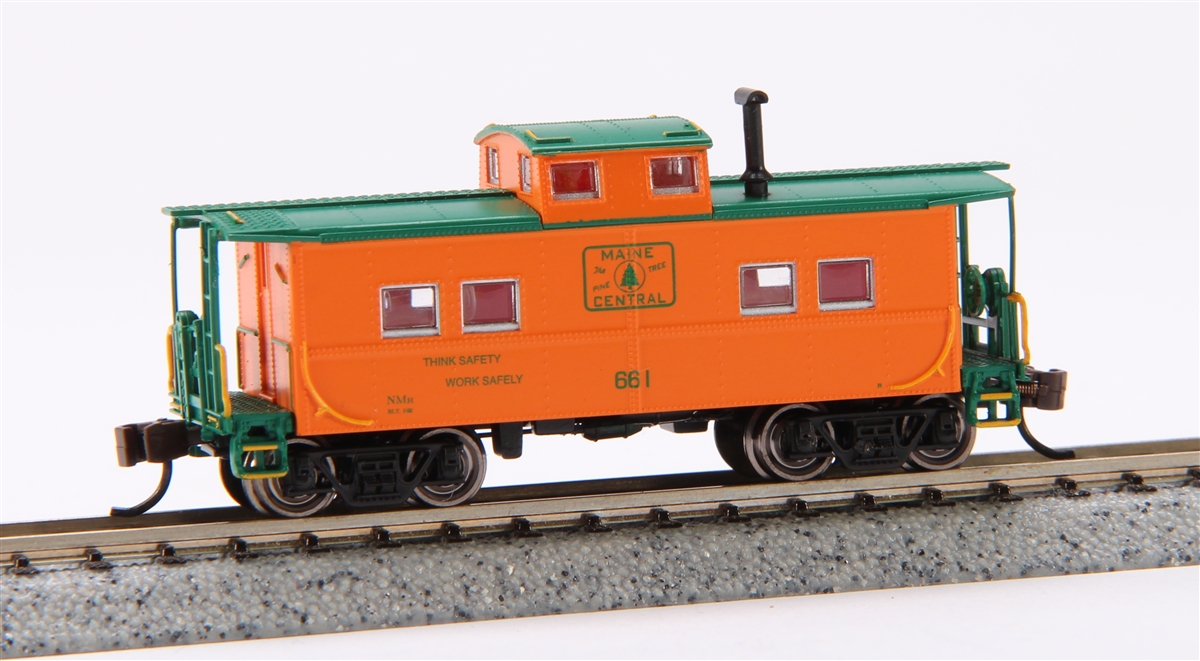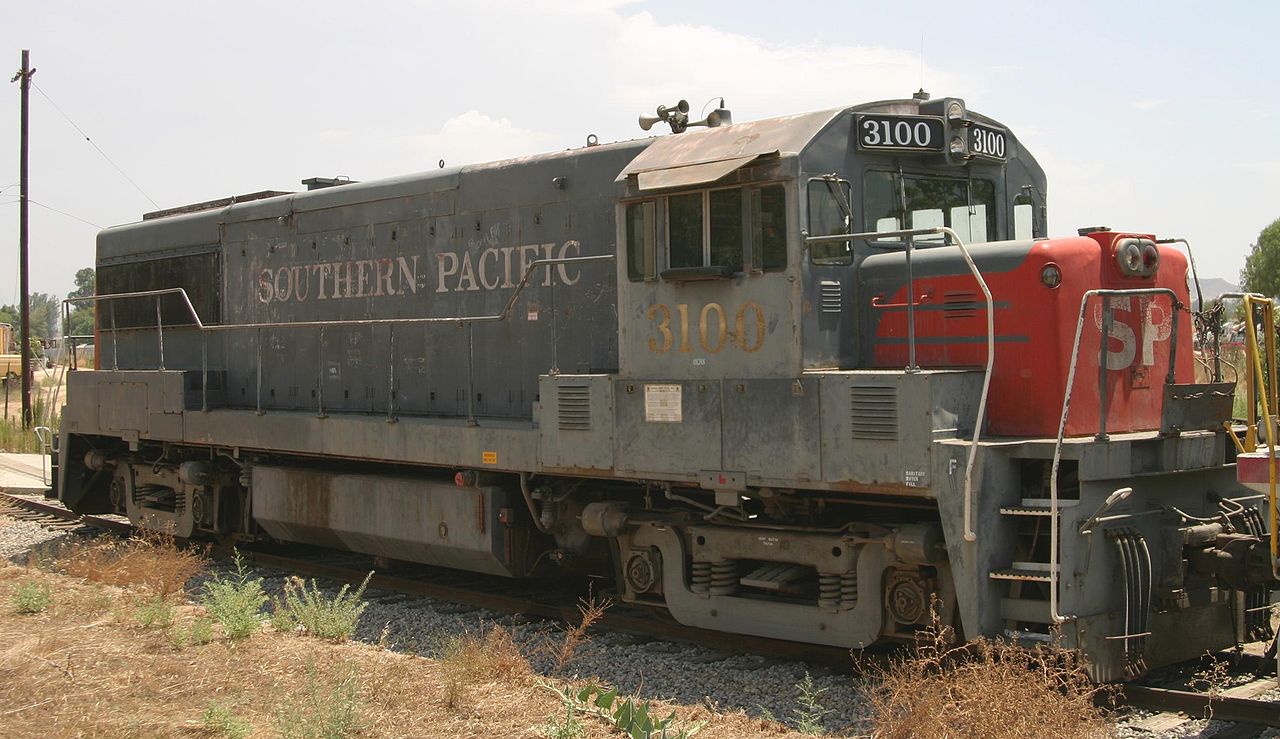Model Information: This model was first produced by Kato for Atlas in 1989. The model was retooled and production transferred to China in 1998. In 2003, the mechanism was updated again and a slow speed motor was introduced.
Although the retooling was performed in 1998, this model has all the features one would expect of a 2000's vintage design. A split-frame, flywheels, blackened wheels and body-mounted couplers. It runs quite well and can pull plenty of cars.
Although the retooling was performed in 1998, this model has all the features one would expect of a 2000's vintage design. A split-frame, flywheels, blackened wheels and body-mounted couplers. It runs quite well and can pull plenty of cars.
DCC Information: The early Kato models are all kinda-sorta DCC friendly, but IMHO, I wouldn't bother. Buy a new mechanism and drop your old shell on it. It will likely fit (no promises though!). All the 1998+ accept DCC boards and many come with factory-installed decoders. For the DCC-Ready versions, they accept the DN163A0 decoder: 1 Amp N Scale Mobile Decoder for Atlas N-Scale GP40-2, U25B, SD35, Trainmaster, B23-7 and others from digitrax.com.
Prototype History: The GE U25B was General Electric's first independent entry into the United States domestic Diesel-electric locomotive railroad market for heavy production road locomotives since 1936. From 1940 through 1953, GE participated in a design, production, and marketing consortium (Alco-GE) for diesel-electric locomotives with the American Locomotive Company. Starting in 1956 GE launched its Universal Series of diesel locomotives for the export market. The U25B was the first attempt at the domestic market since its termination of the consortium agreement with Alco.
The U25B (nicknamed U-Boat) was the first commercially successful domestic diesel electric road locomotive designed, built, and sold by General Electric after its split with the American Locomotive Company (Alco), a company dating back to the steam era. Along with Ingersoll-Rand, GE built the first viable American diesel-electric locomotive in 1928. In 1940 GE partnered with ALCO to enter regular production of Diesel locomotives. They were successful in building locomotives for switching and short-haul applications, having introduced the first road-switcher design in 1941 (which would supplant the carbody design developed by the Electro-Motive Corporation by the mid-1950s) and gained about a 40% market share during the Dieselization era. ALCO-GE's efforts in main line road locomotives had not been successful at breaking into EMD's dominant position in that market, although they introduced a successful gas turbine-electric locomotive to market in 1952. In 1953 GE went independent from ALCO in locomotive production, with their new subsidiary GE Rail taking over the gas turbine-electric venture while they sought a supplier of more reliable Diesel engines suitable for road locomotives. Production of Cooper-Bessemer powered Universal Series locomotives began in 1956 and some 400 export locomotives were sold before the U25B was offered in the United States. The U25B was announced by General Electric as a domestic model on April 26, 1960. It was the first locomotive powered by GE's highly successful FDL-16 engine.
From Wikipedia
The U25B (nicknamed U-Boat) was the first commercially successful domestic diesel electric road locomotive designed, built, and sold by General Electric after its split with the American Locomotive Company (Alco), a company dating back to the steam era. Along with Ingersoll-Rand, GE built the first viable American diesel-electric locomotive in 1928. In 1940 GE partnered with ALCO to enter regular production of Diesel locomotives. They were successful in building locomotives for switching and short-haul applications, having introduced the first road-switcher design in 1941 (which would supplant the carbody design developed by the Electro-Motive Corporation by the mid-1950s) and gained about a 40% market share during the Dieselization era. ALCO-GE's efforts in main line road locomotives had not been successful at breaking into EMD's dominant position in that market, although they introduced a successful gas turbine-electric locomotive to market in 1952. In 1953 GE went independent from ALCO in locomotive production, with their new subsidiary GE Rail taking over the gas turbine-electric venture while they sought a supplier of more reliable Diesel engines suitable for road locomotives. Production of Cooper-Bessemer powered Universal Series locomotives began in 1956 and some 400 export locomotives were sold before the U25B was offered in the United States. The U25B was announced by General Electric as a domestic model on April 26, 1960. It was the first locomotive powered by GE's highly successful FDL-16 engine.
From Wikipedia
Road Name History: The Chicago, Rock Island and Pacific Railroad (CRI&P RR) (reporting marks RI, ROCK) was a Class I railroad in the United States. It was better known as the Rock Island Line, or, in its final years, The Rock. At the end of 1970 it operated 7183 miles of road on 10669 miles of track; that year it reported 20557 million ton-miles of revenue freight and 118 million passenger-miles. (Those totals may or may not include the former Burlington-Rock Island Railroad.)
Its predecessor, the Rock Island and La Salle Railroad Company, was incorporated in Illinois on February 27, 1847, and an amended charter was approved on February 7, 1851, as the Chicago and Rock Island Railroad. Construction began October 1, 1851, in Chicago, and the first train was operated on October 10, 1852, between Chicago and Joliet. Construction continued on through La Salle, and Rock Island was reached on February 22, 1854, becoming the first railroad to connect Chicago with the Mississippi River.
In 1980 Rock Island was liquidated. The railroad's locomotives, rail cars, equipment, tracks, and real estate were sold to other railroads or to scrappers. William Gibbons (the trustee) was able to raise more than $500 million in the liquidation, paying off all the railroad's creditors, bondholders and all other debts in full at face value with interest. Henry Crown was ultimately proven correct, as both he and other bondholders who had purchased Rock Island debt for cents on the dollar during the low ebb in prices did especially well.
Read more on Wikipedia and Rock Island Technical Society.
Its predecessor, the Rock Island and La Salle Railroad Company, was incorporated in Illinois on February 27, 1847, and an amended charter was approved on February 7, 1851, as the Chicago and Rock Island Railroad. Construction began October 1, 1851, in Chicago, and the first train was operated on October 10, 1852, between Chicago and Joliet. Construction continued on through La Salle, and Rock Island was reached on February 22, 1854, becoming the first railroad to connect Chicago with the Mississippi River.
In 1980 Rock Island was liquidated. The railroad's locomotives, rail cars, equipment, tracks, and real estate were sold to other railroads or to scrappers. William Gibbons (the trustee) was able to raise more than $500 million in the liquidation, paying off all the railroad's creditors, bondholders and all other debts in full at face value with interest. Henry Crown was ultimately proven correct, as both he and other bondholders who had purchased Rock Island debt for cents on the dollar during the low ebb in prices did especially well.
Read more on Wikipedia and Rock Island Technical Society.
Brand/Importer Information: In 1924 Stephan Schaffan, Sr. founded the Atlas Tool Company in Newark, New Jersey. In 1933 his son, Stephan Schaffan, Jr., came to work for his father at the age of sixteen. Steve Jr. built model airplanes as a hobby and frequented a local hobby shop. Being an enterprising young man, he would often ask the owner if there was anything he could do to earn some extra spending money. Tired of listening to his requests, the hobby-store owner threw some model railroad track parts his way and said, "Here, see if you can improve on this".
In those days, railroad modelers had to assemble and build everything from scratch. Steve Jr. created a "switch kit" which sold so well, that the entire family worked on them in the basement at night, while doing business as usual in the machine shop during the day.
Subsequently, Steve Jr. engineered the stapling of rail to fiber track, along with inventing the first practical rail joiner and pre-assembled turnouts and flexible track. All of these products, and more, helped to popularize model railroading and assisted in the creation of a mass-market hobby. The budding entrepreneur quickly outgrew the limitations of a basement and small garage operation. Realizing they could actually make a living selling track and related products, Steve and his father had the first factory built in Hillside, New Jersey at 413 Florence Avenue in 1947. On September 30, 1949, the Atlas Tool Company was officially incorporated as a New Jersey company.
In 1985, Steve was honored posthumously for his inventions by the Model Railroad Industry Association and was inducted into the Model Railroad Industry Hall of Fame in Baltimore, Maryland. In addition, Steve was nominated and entered into the National Model Railroad Association Pioneers of Model Railroading in 1995.
In the early 1990s, the Atlas Tool Company changed its name to Atlas Model Railroad Company, Inc.
In those days, railroad modelers had to assemble and build everything from scratch. Steve Jr. created a "switch kit" which sold so well, that the entire family worked on them in the basement at night, while doing business as usual in the machine shop during the day.
Subsequently, Steve Jr. engineered the stapling of rail to fiber track, along with inventing the first practical rail joiner and pre-assembled turnouts and flexible track. All of these products, and more, helped to popularize model railroading and assisted in the creation of a mass-market hobby. The budding entrepreneur quickly outgrew the limitations of a basement and small garage operation. Realizing they could actually make a living selling track and related products, Steve and his father had the first factory built in Hillside, New Jersey at 413 Florence Avenue in 1947. On September 30, 1949, the Atlas Tool Company was officially incorporated as a New Jersey company.
In 1985, Steve was honored posthumously for his inventions by the Model Railroad Industry Association and was inducted into the Model Railroad Industry Hall of Fame in Baltimore, Maryland. In addition, Steve was nominated and entered into the National Model Railroad Association Pioneers of Model Railroading in 1995.
In the early 1990s, the Atlas Tool Company changed its name to Atlas Model Railroad Company, Inc.
Item created by: gdm on 2016-03-11 09:24:44. Last edited by Lethe on 2020-05-07 00:00:00
If you see errors or missing data in this entry, please feel free to log in and edit it. Anyone with a Gmail account can log in instantly.
If you see errors or missing data in this entry, please feel free to log in and edit it. Anyone with a Gmail account can log in instantly.






